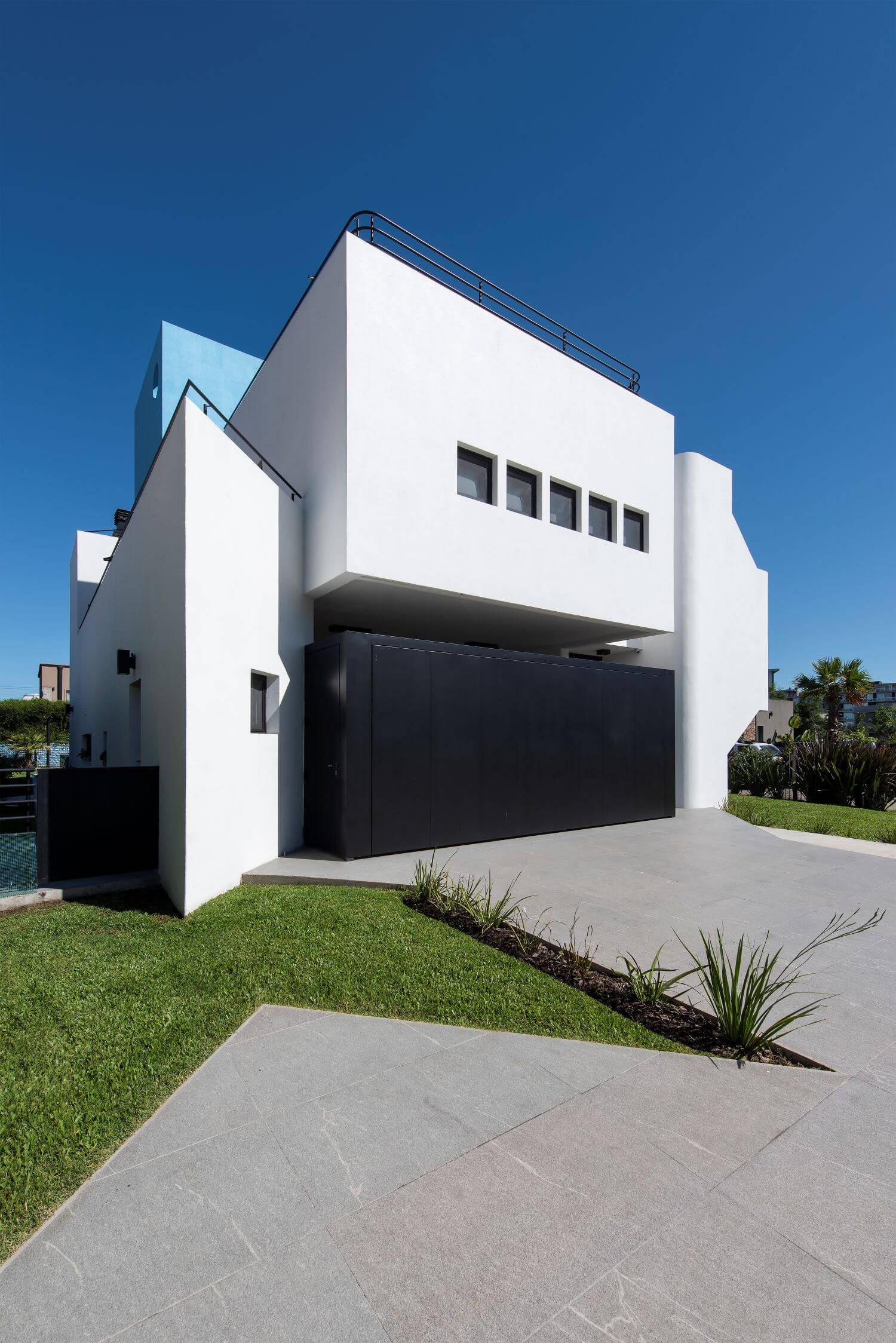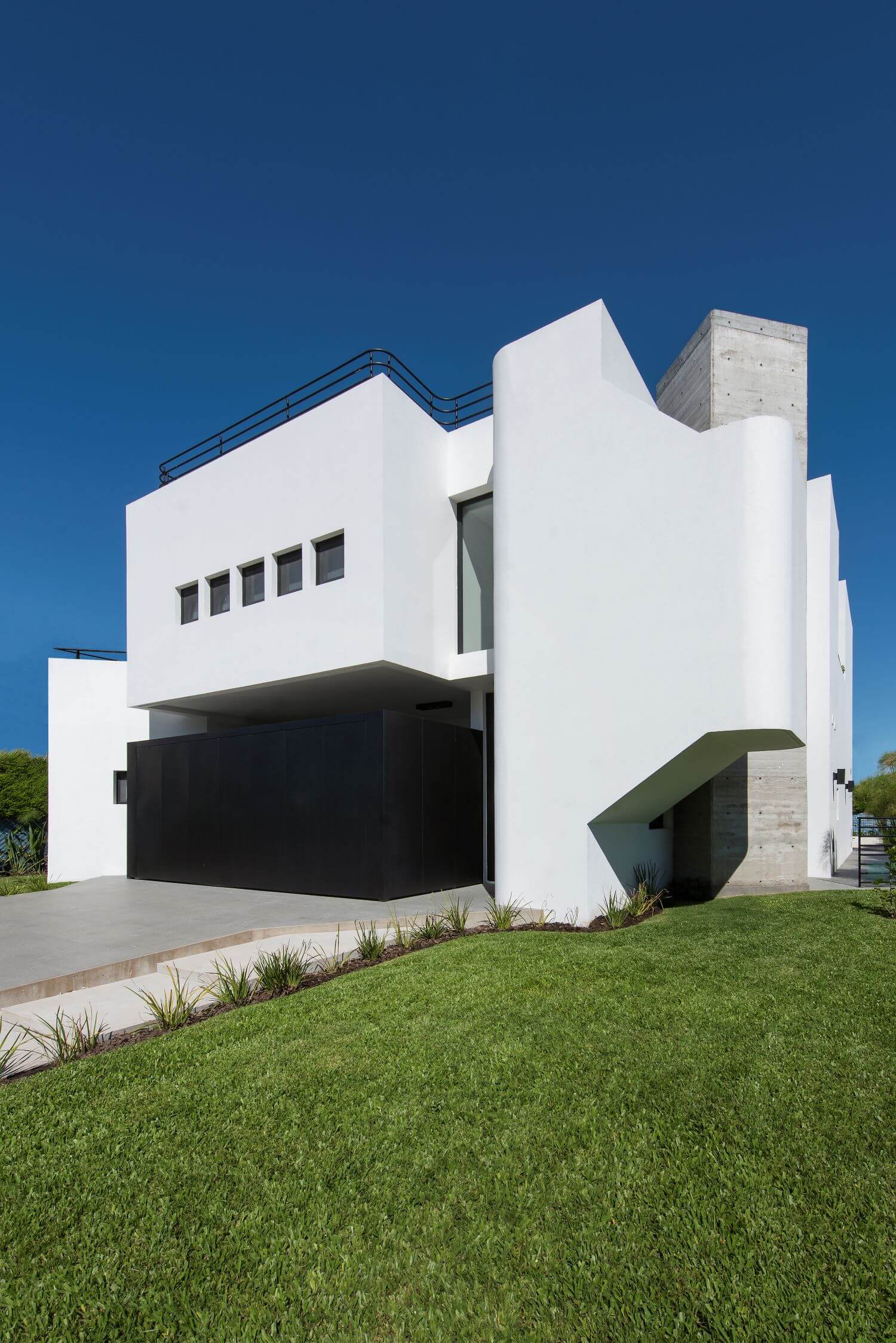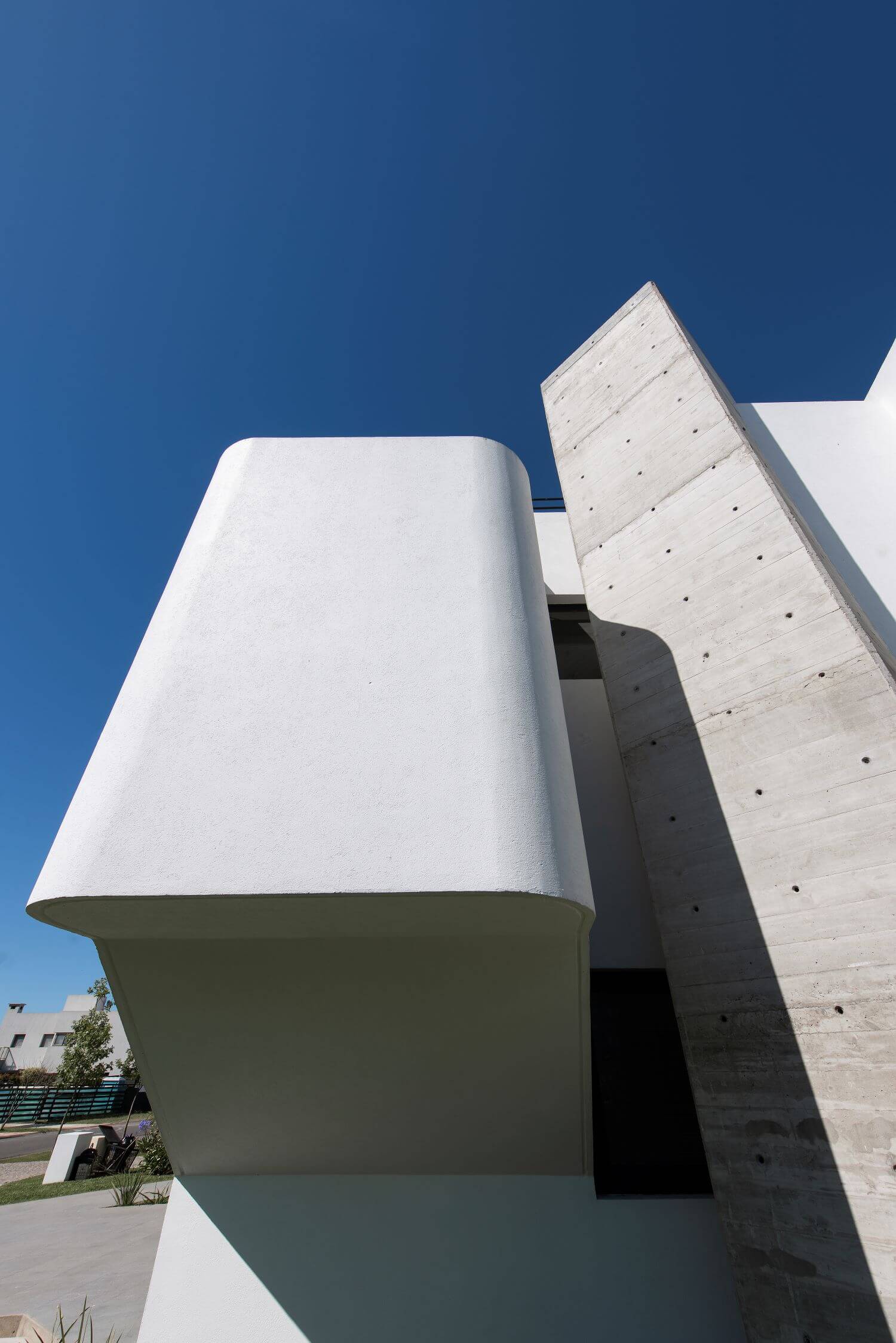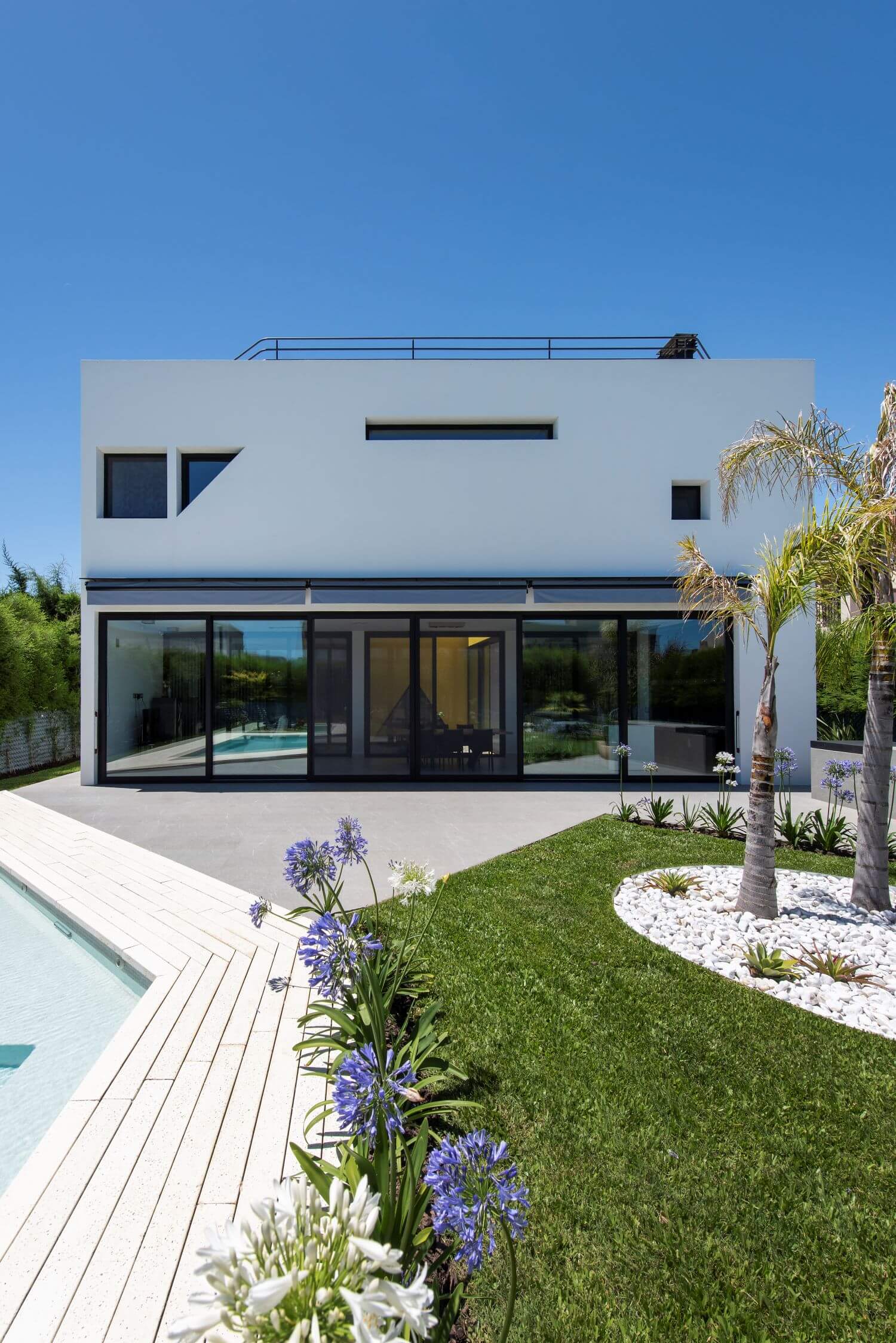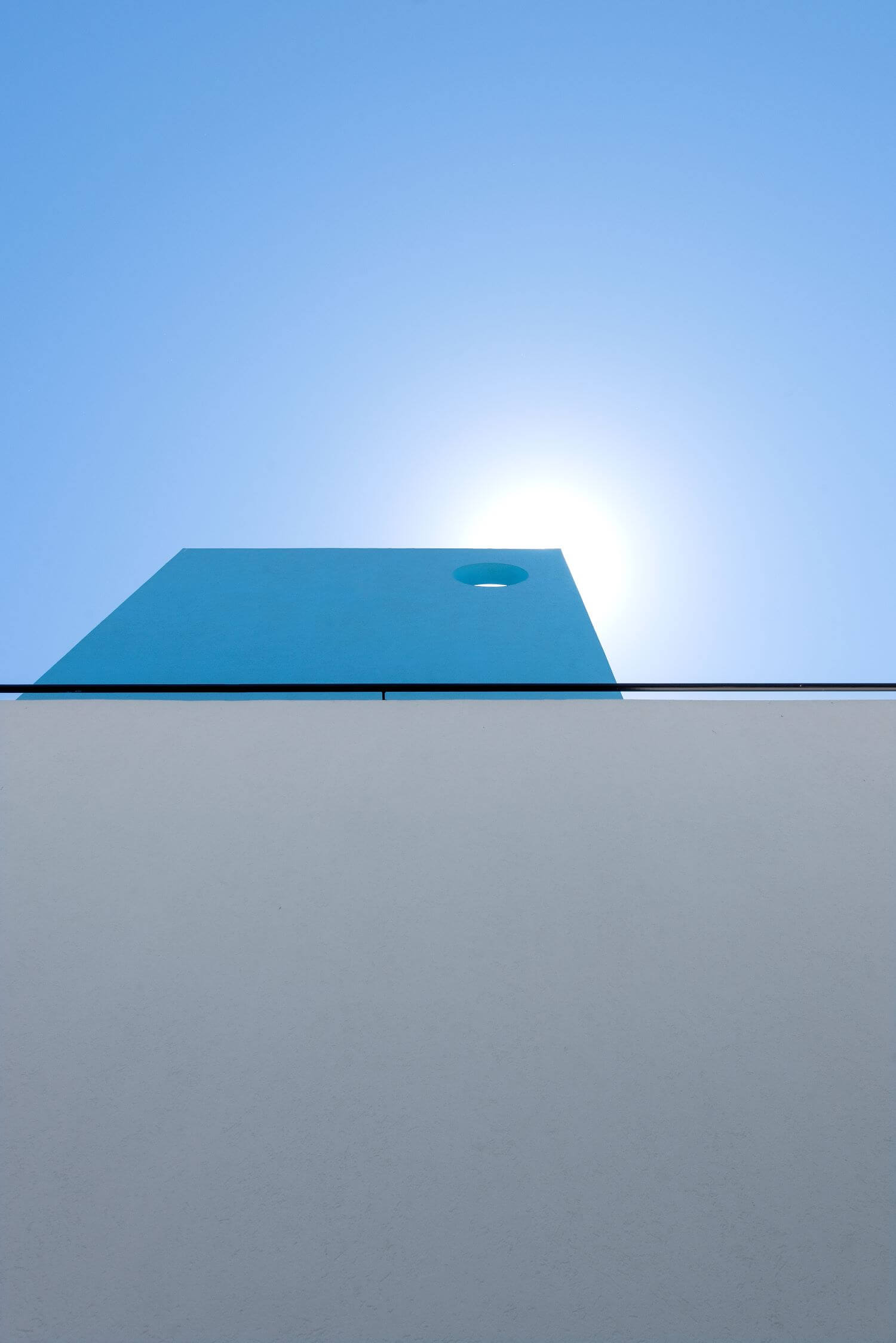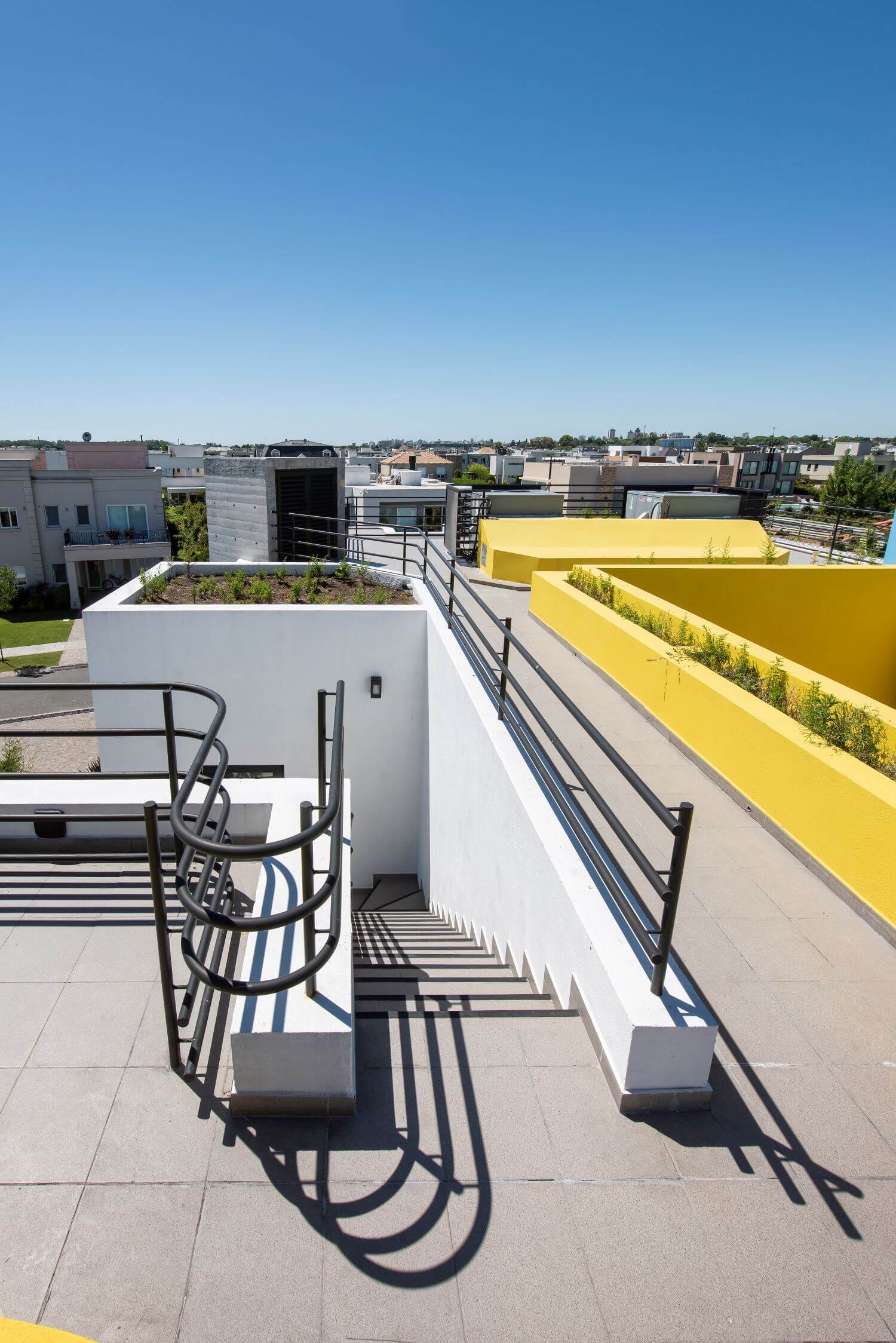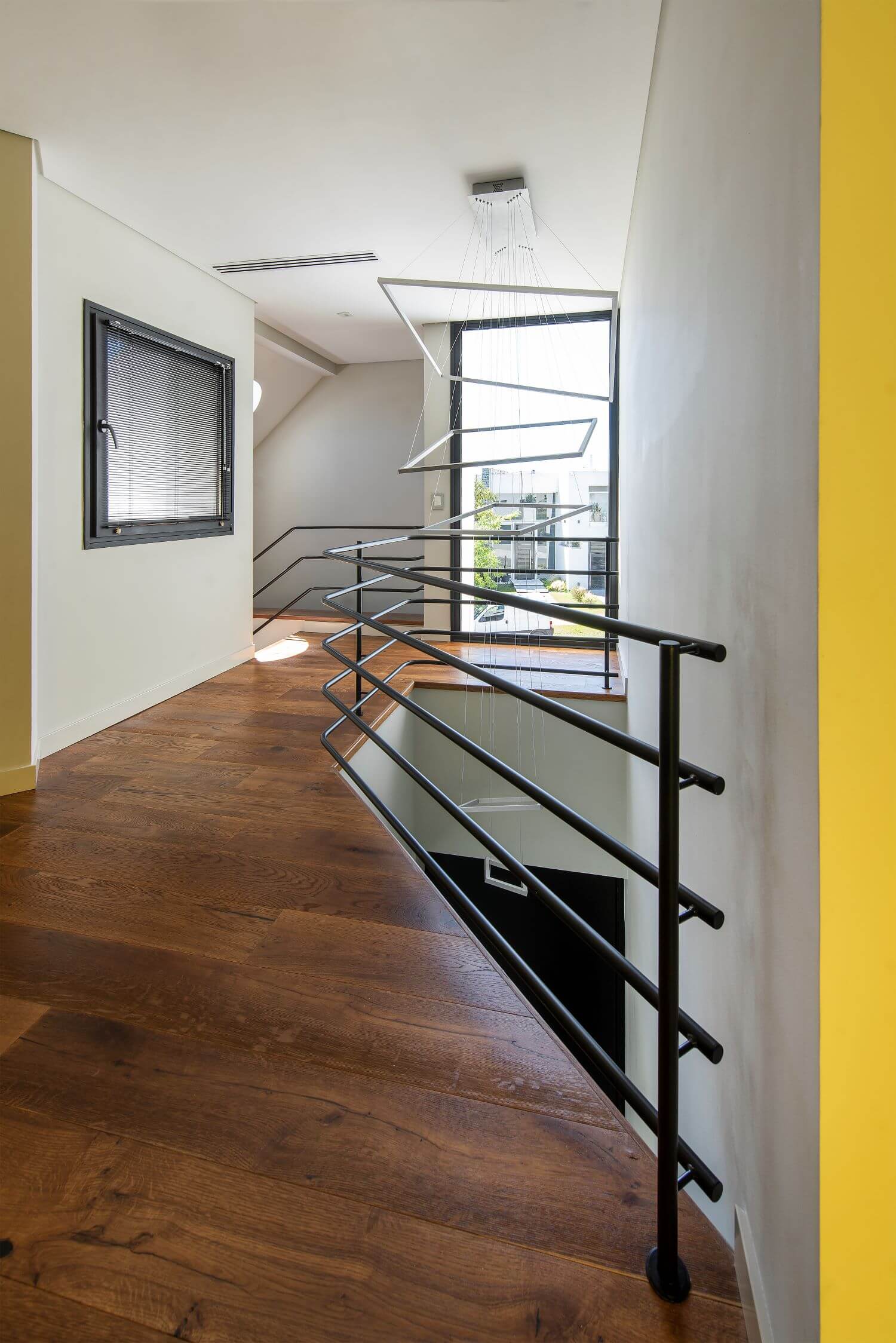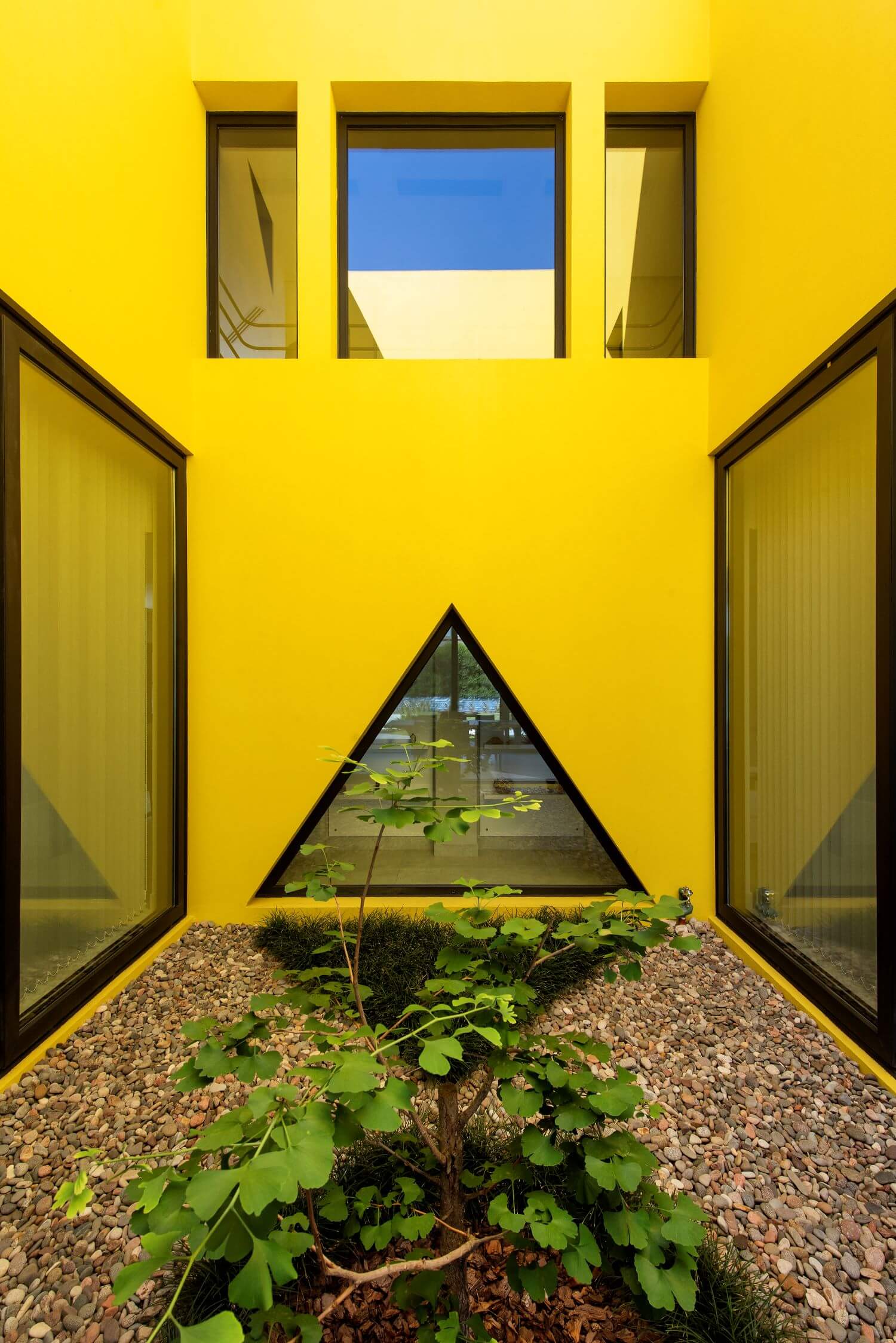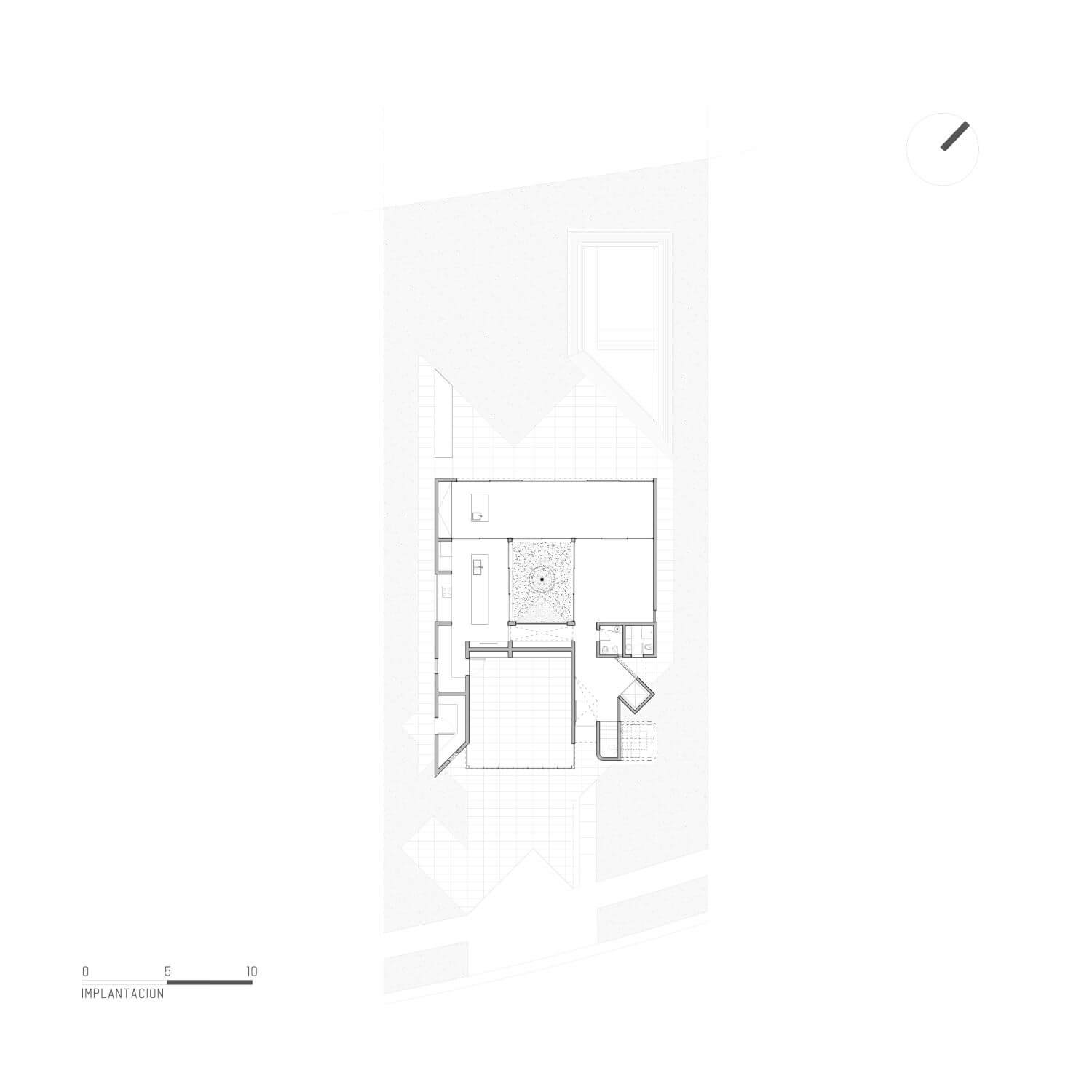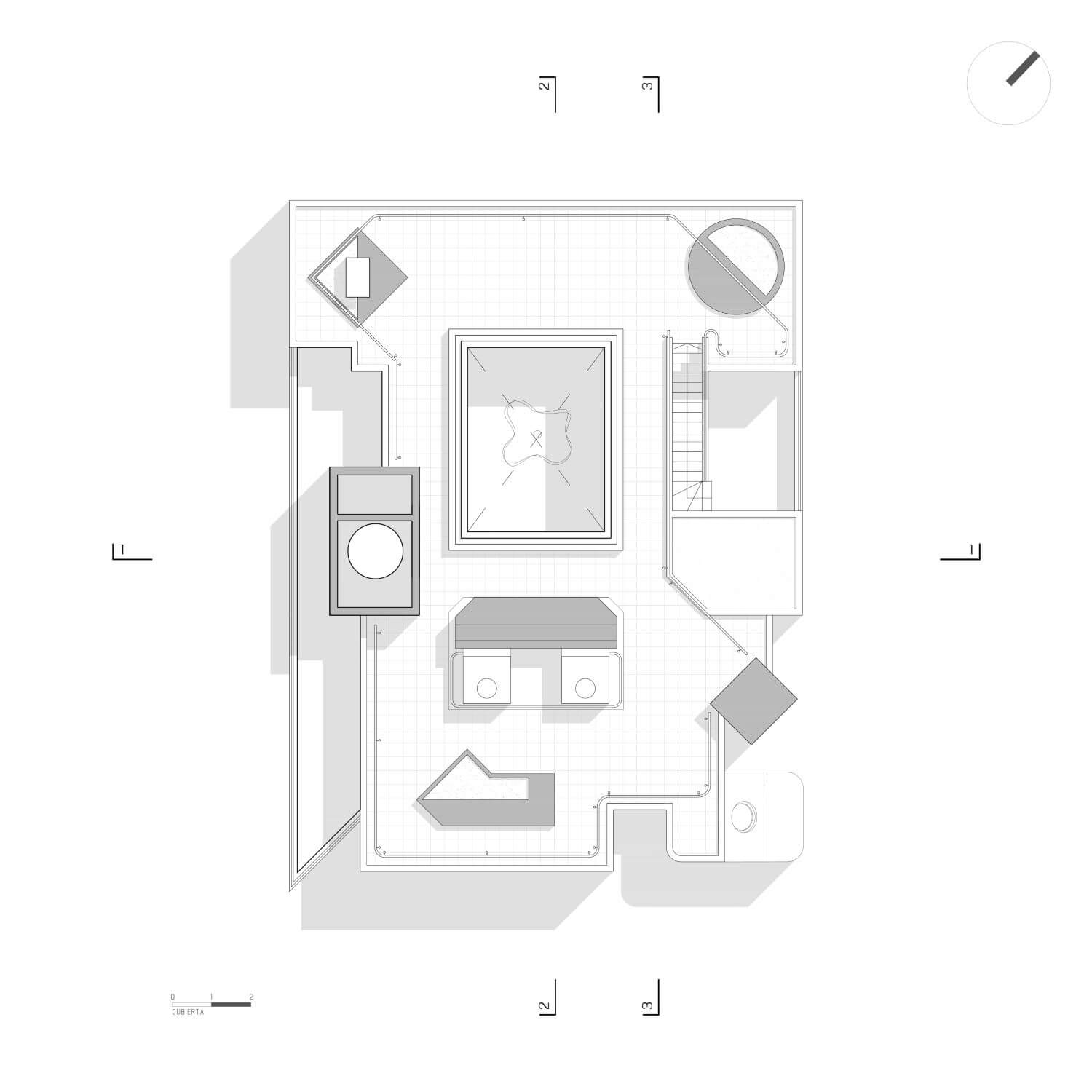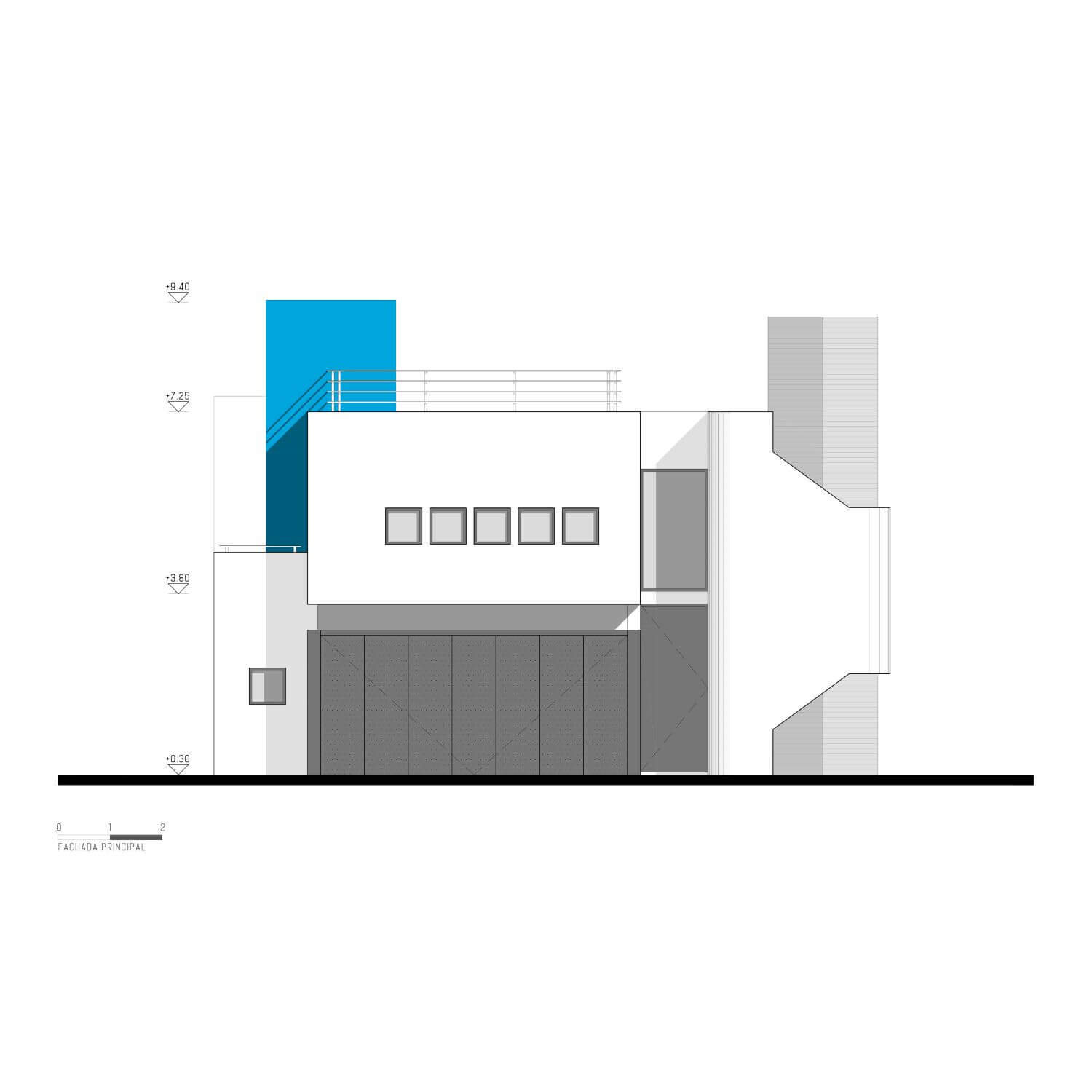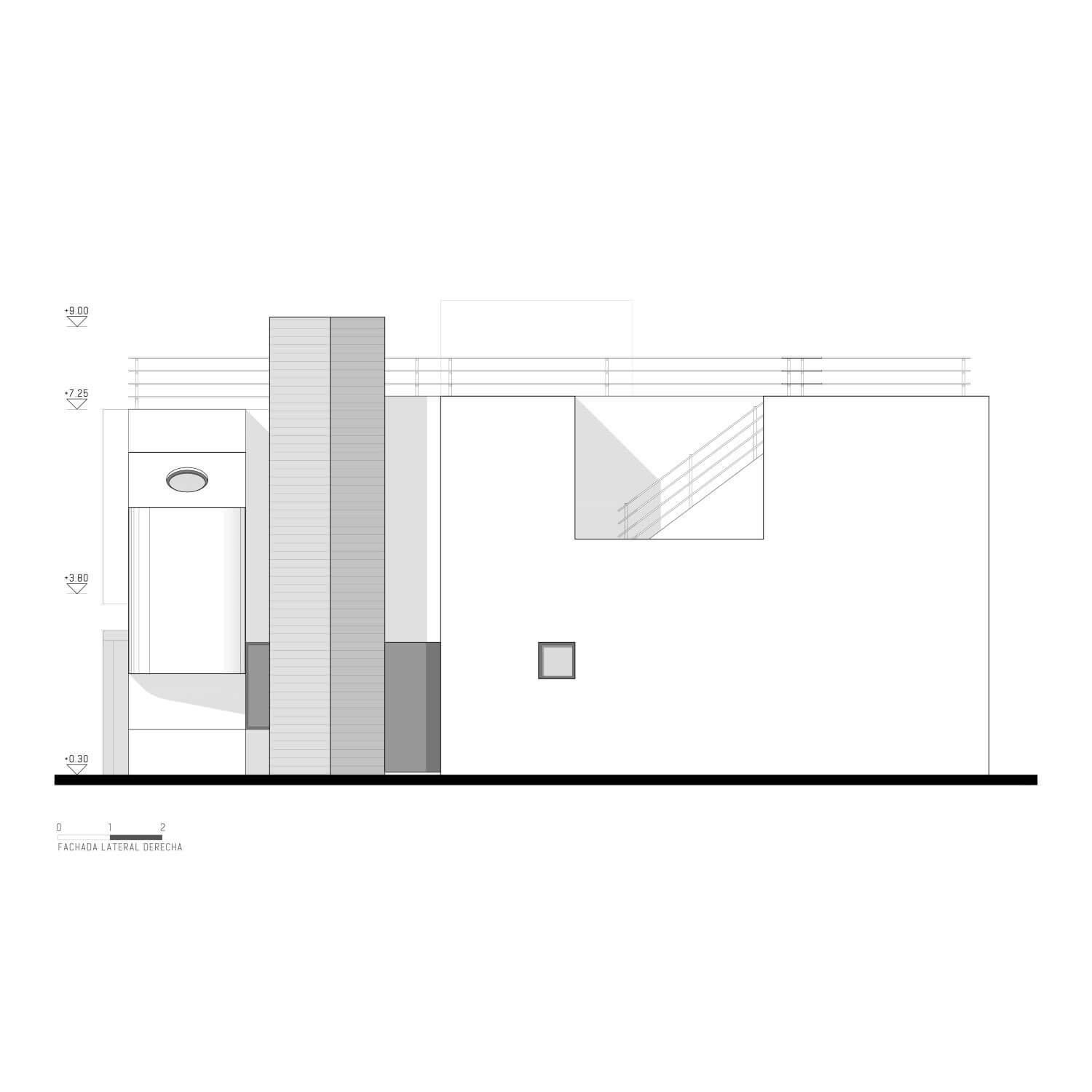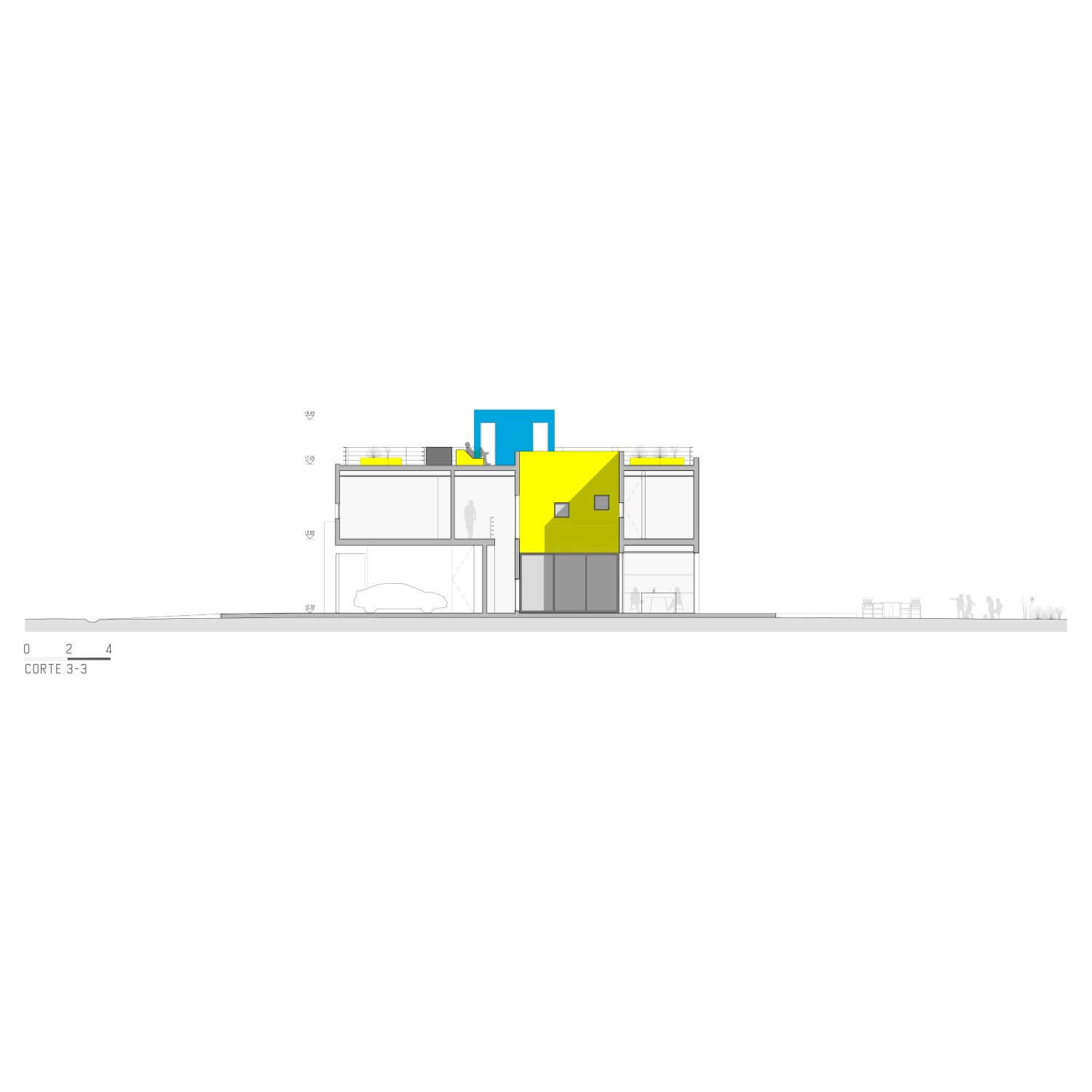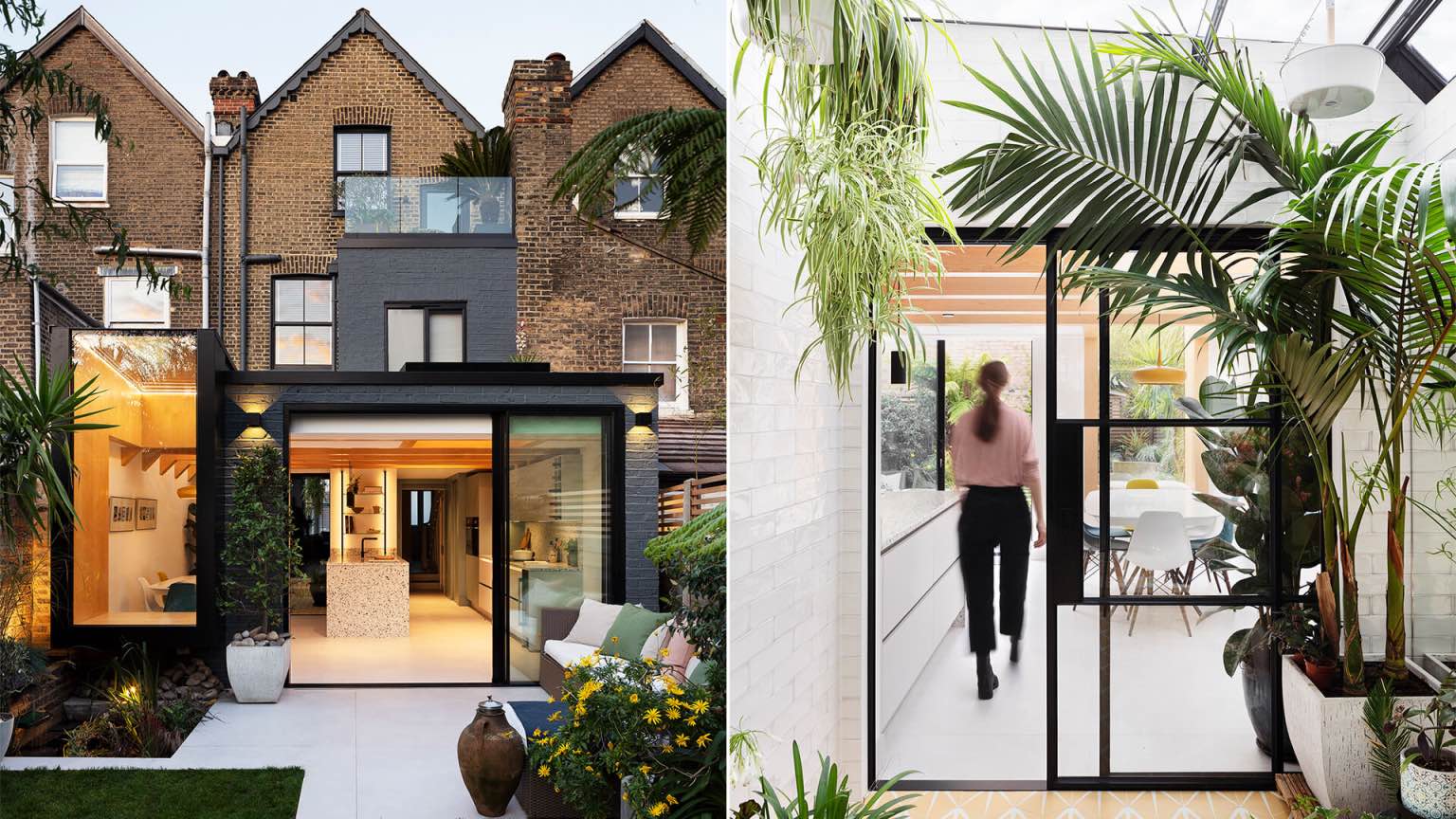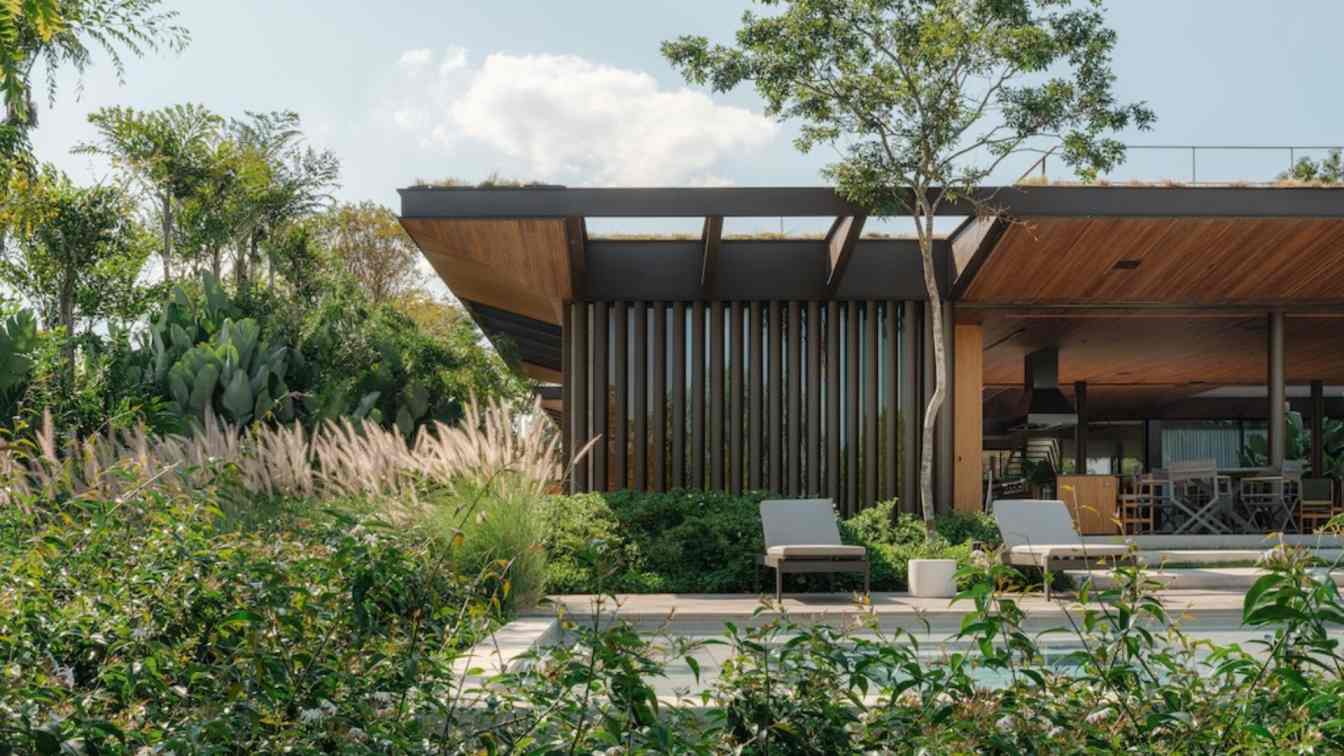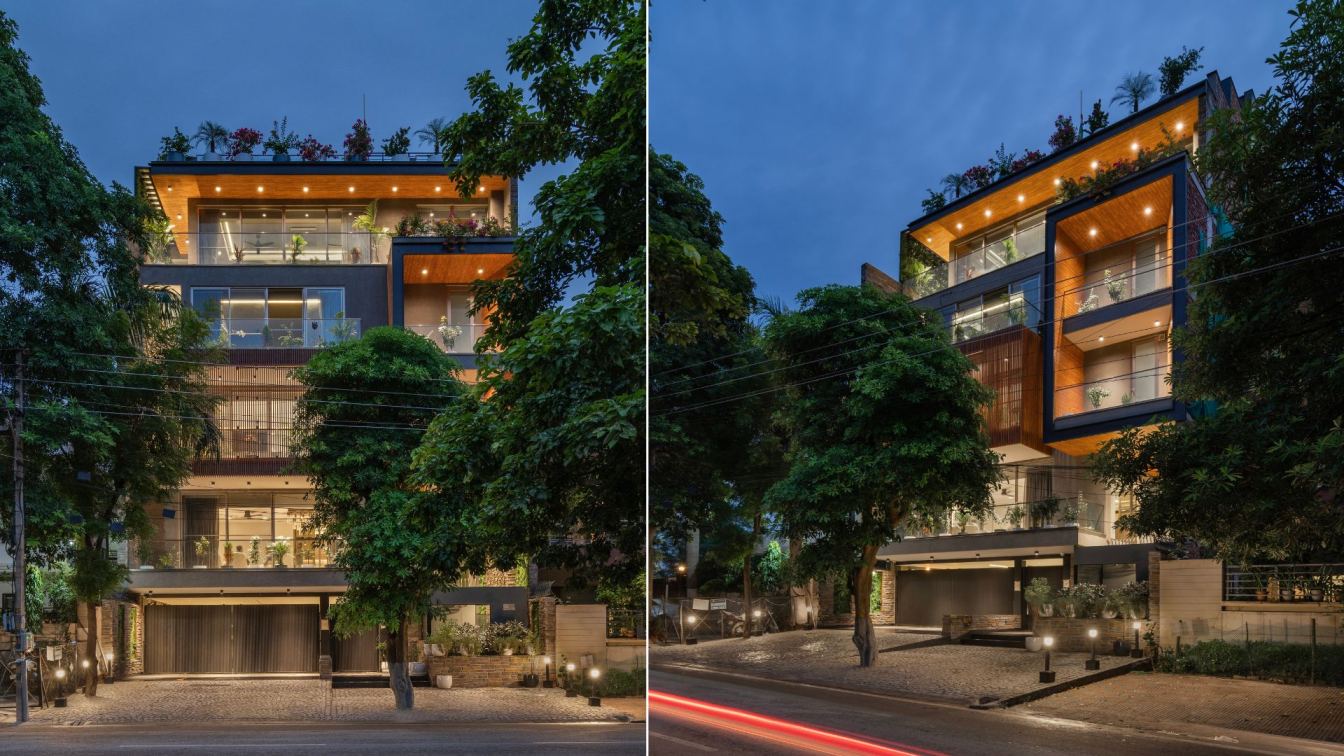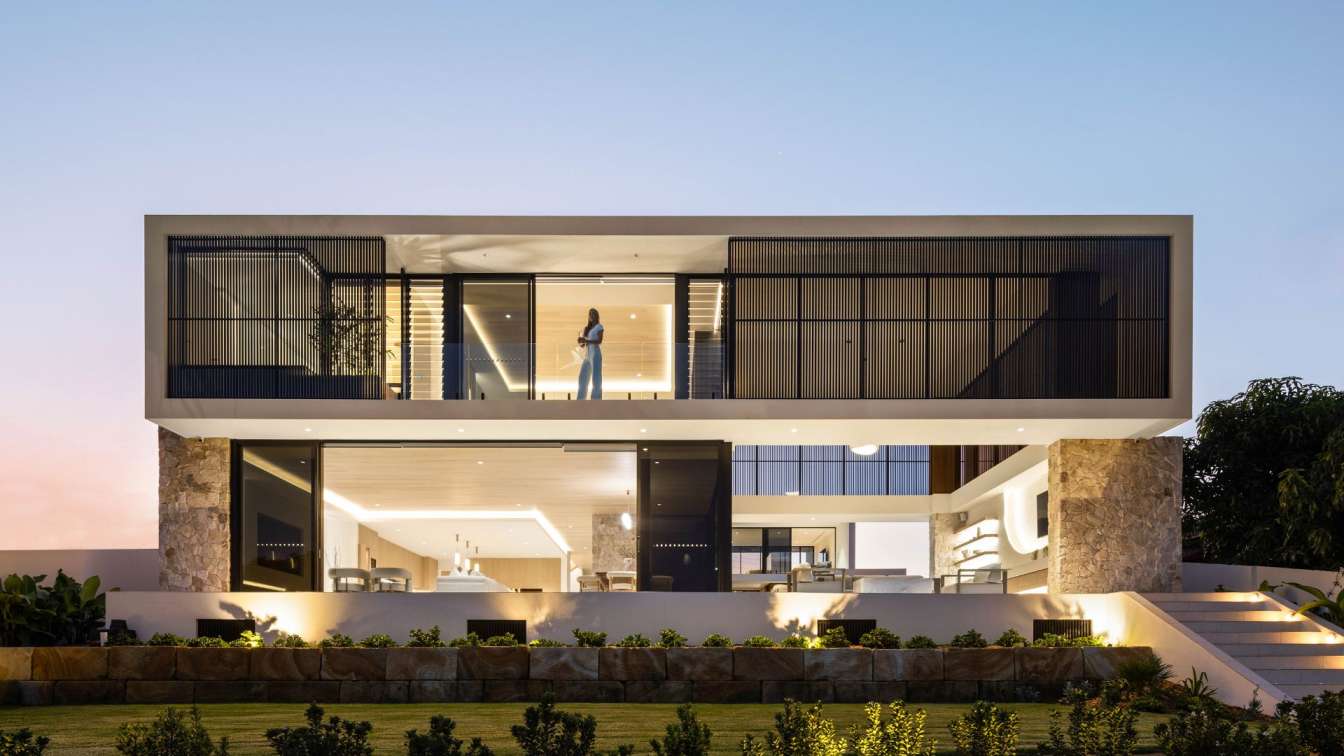Location:
Berardi - Grasso - Berardi: The Ñ House is located in the Nuevo Quilmes neighborhood, on a plot that borders both on its sides and on the opposite front with other houses, while in front, street and houses through, there is a canal. This condition led us to think of the work in two apparently contradictory ways but that respond to the particularities of the terrain. On the ground floor at the back, the house opens, while in front it closes, and the services are located. Then, on the top floor, there are bedrooms that retain their privacy as they are boxes with very careful perforations, and on the terrace, a situation of recreation and viewpoint typical of the family recovers the long visuals above the entire neighborhood.
Organization:
On the ground floor, the house is organized around a central patio, which separates the kitchen-dining area from the living room, but in turn keep it visually integrated thus preserving a perception of the maximum possible width in the lot. This condition of maximum extension is recovered in the covered gallery or winter-quincho garden, which ends up uniting the traditional areas of the house in a kind of indeterminate social space that takes advantage of its dimensional particularity and in turn of its relationship with the outside. On the upper floor, the central courtyard no longer divides hemispheres in the longitudinal direction of the house, but does so transversely, placing the children towards the front of the lot and the parents in the opposite. From the intermediate section, through an elevated patio, you access the garden terrace on the last level where the water tank, boiler, central air conditioning system and a series of flower beds are located.
Patio:
The central empty space interprets its limits with the covered spaces in a particular way on each face that defines it. On the ground floor, it is proposed to link the social spaces with each other, that is why it is glazed on 3 of its sides, but regulates its intensity in the circulation expressing a triangle that allows to widely illuminate the entire floor and partially anticipate the outcome towards the background. In its upper part, the patio remains more conservative, with small perforations that maintain the privacy of the intimate rooms with the exception of the study on the top floor that is located next to the children's room.
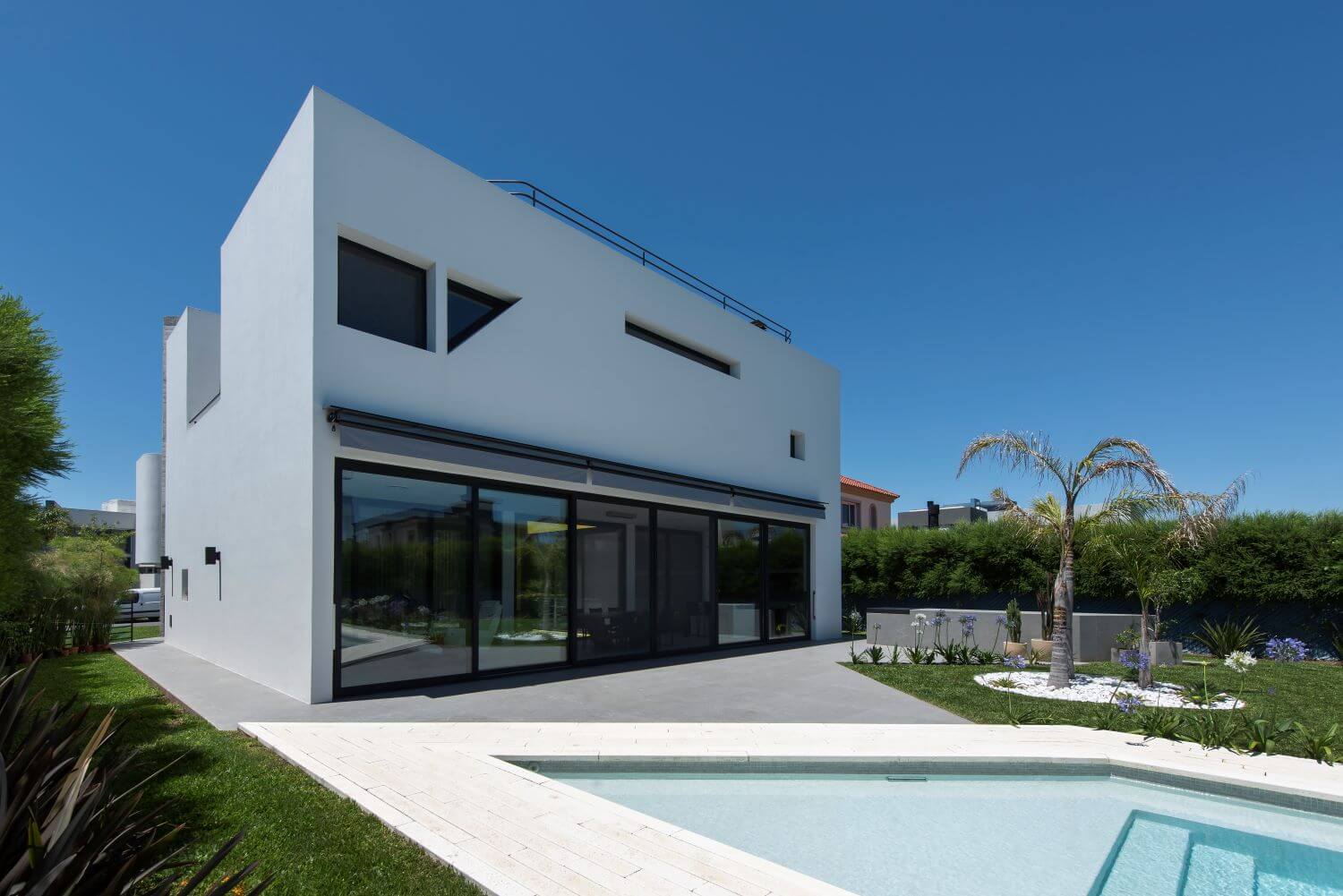
Form:
The general volumetry of the work is posed as a still life, where objects are stacked, approach, masses and forms dialogue, encountering tensions and distensions. The house is embodied as a prism in its entirety with a central hollow, the patio, and towards the front the vertical circulatory elements and other secondary spaces, are individualized within the main form that inscribes the house to begin to dialogue with the inflections proposed by the visuals towards the dike through the houses. On the facades, in their flat sections, regulating axes were drawn that allow ordering the openings carefully executed from the inside. What on the outside seems to be random, inside finds its vain with a logic proper to the internal function.
Materiality:
The house is of traditional construction, with reinforced concrete structure and hollow brick plastered with plastic coating as an external finish. The murary presence is predominant throughout the work having very careful openings on all its faces with the exception of the front counter on the ground floor where the space is freed with a semi-inverted beam of 13 meters long that clears obstacles to the glazed gallery to increase the interior-exterior relationship. The interiors of the house are perceived white with a single level of suspended ceiling that contain the central air conditioning that goes through all the rooms without being perceived. As for the details of blacksmithing, the work tries to recover from the Argentine rationalist tradition, resorting to a language of round pipes that enhance the lines of the house and proposes its terraces as viewpoints to the outside.


